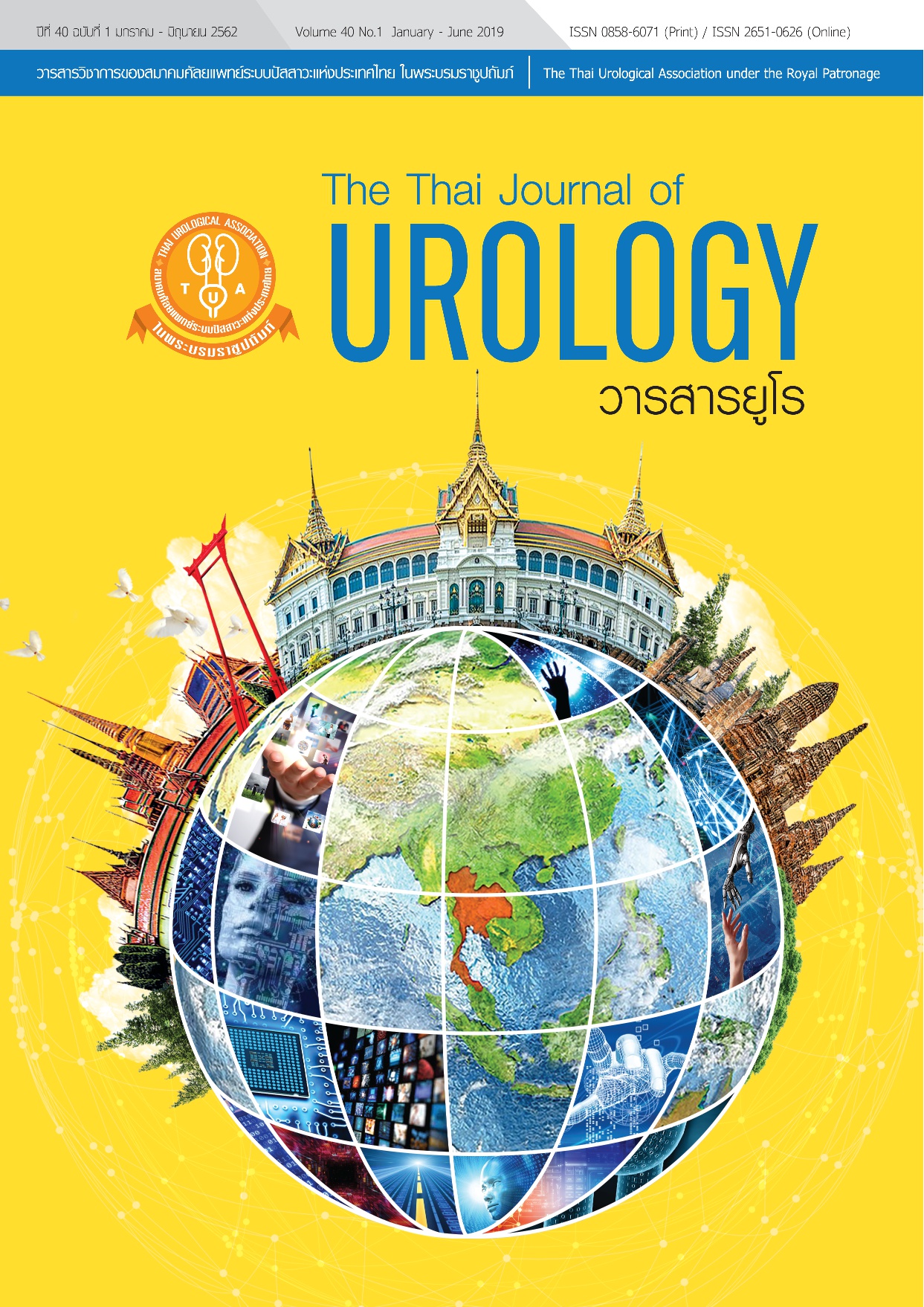Efficiency of the newly proposed practice guideline of catheter traction after transurethral resection of prostate (TURP) in patients with benign prostatic hyperplasia (BPH)
Keywords:
Benign prostatic hyperplasia (BPH), Transurethral resection of prostate (TURP), Catheter tractionAbstract
Objective: To study the efficiency of catheter traction in patients with BPH after TURP, according to the newly proposed practice guideline.
Material and Method: A single-center randomized controlled trial. Randomization was undertaken using computer generated tables in order to allocate treatments. Sixty patients with BPH after TURP were randomized to receive catheter traction, according to the newly proposed or routine practice guidelines. Newly proposed practice guideline of catheter traction in patients with BPH after TURP (See full article). The efficiency of the guideline was evaluated by 1) Postoperative clot retention 2) Re-catheter traction 3) Re-continuous bladder irrigation (CBI) 4) Hematocrit decrease after surgery 5) Length of hospital stay.
Result: Sixty patients (newly proposed guideline n=30; routine traction n=30) were randomized. There was no significant difference in demographic and preoperative data between the two groups. Postoperative clot retention rate, re-catheter traction rate, re-CBI rate and mean hematocrit decrease were not different between the two groups, [(0% vs 3.3%), (0% vs 3.3%), (6.7% vs 10%), p=1.0], [3.52 (2.99) vs 3.43 (2.95), p=0.91] respectively. Length of hospital stay was statistically different in the two groups (3.57 vs 4.37, p=0.04).
Conclusion: The newly proposed practice guideline is safe and efficient. It could be applied in routine practice.
References
2. Nudell DM. Cattolica EV. Transurethral prostatectomy: An Update. AUA Update Series 2000; 19:33-40.
3. Durrani SN, Khan S, Ur Rehman A, et al. Transurethral resection of prostate: early versus delayed removal of catheter : J Ayub Med Coll Abbottabad. 2014 Jan-Mar; 26(1):38-41.
4. Agrawal SK, Kumar AS, et al. Early removal of catheter following transurethral resection of the prostate. Br J Urol. 1993 Dec; 72(6):928-9.
5. Gordon NS, et al. Catheter-free same day surgery transurethral resection of the prostate: J Urol. 1998 Nov; 160(5):1709-12.
6. Walker EM, Bera S, Faiz M, et al.Does catheter traction reduce post-transurethral resection of the prostate blood loss? : Br J Urol. 1995 May; 75(5):614-7.
7. George J. Mamo, Stephen P. Cohen et al. Early catheter removal vs. conventional practice in patients undergoing transurethral resection of prostate: The Journal of Urology Volume 160, Issue 5, November 1998, Pages 1709–1712
8. Gordon NS, et al. The tide is stemmed. A method of catheter traction for the control of venous haemorrhage following transurethral resection of prostate: Aust N Z J Surg. 1987 Jul; 57(7):475-6
9. Campbell-Walsh Urology,10th Edition 2012. Transurethral Resection of The Prostate. Pages 1709–1712
10. A Kosar,T A Serel,A Ozturk,Dogruer, et al. Penile necrosis: an unexpected complication following transurethral resection of the prostate : Scandinavian journal of urology and nephrology 1993,33(6):41-89.
11. Lee JY, Chang JS, Koo KC, Lee SW, Choi YD, Cho KS. Hematuria grading scale: a new tool for gross hematuria. Urology. 2013 Aug;82(2):284-9.


